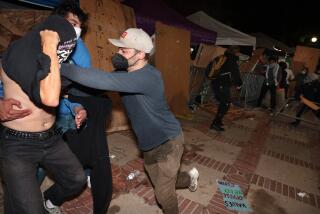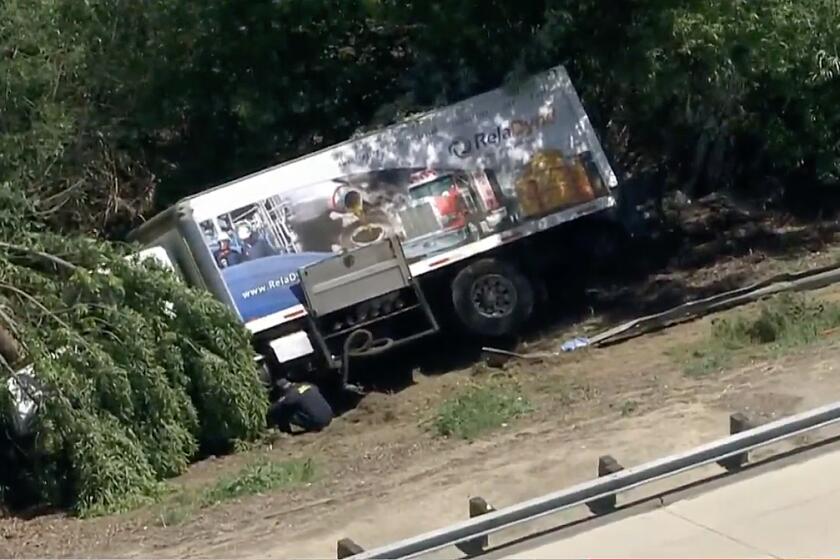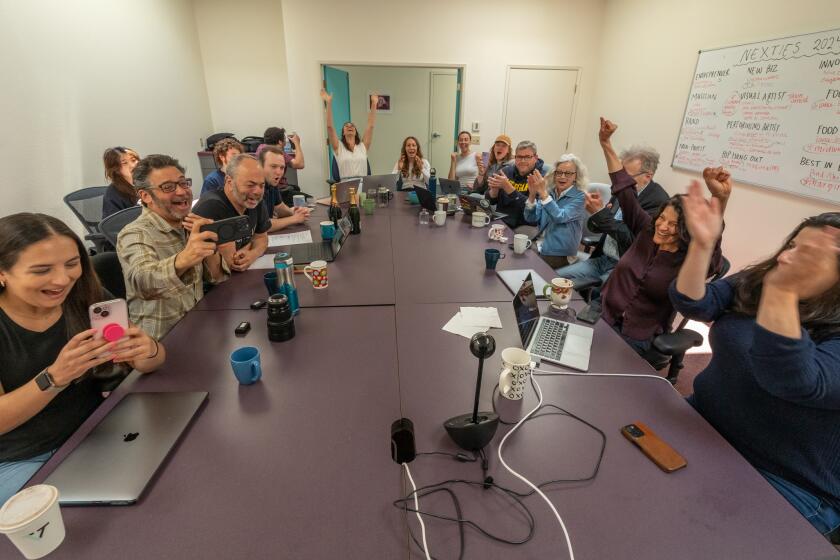‘Higher Purpose’ Zone Sought for Churches
Saying that prohibitive land prices are squeezing out small churches, members of a new Orange County religious coalition this week announced plans to seek zoning requirements for churches and nonprofit groups that would put them on a par with schools, parks and open space.
Charter members of the Affiliation of Concerned Religious Communities said such government-required “land use for higher purposes” may be the best hope for new congregations, which, frustrated by an inability to compete in Orange County’s escalating real estate market, are becoming an endangered species.
“Our planned communities are being built without the representational number of community churches, temples, synagogues and other nonprofit organizations that have existed historically in this country,” according to a statement released by the nine-member interim board of pastors, church groups and representatives from the Baptists, Nazarenes and Assembly of God.
A shortened statement of the coalition’s purpose will be sent to the County Board of Supervisors and officials of each city in the county, asking that the group be recognized to represent religious groups on the land-use issue, organizers said.
“We want the right to work with the developer to correct this deficiency in land-use planning and create a new ‘nonprofit’ land-use zone,” coalition members said.
“We are faced with such increased costs, that it’s become more and more difficult to build churches in neighborhoods,” said Fred Plumer, pastor of the 150-member United Church of Christ in Irvine. “When I say difficult, I’m saying almost impossible.”
Only so-called “megachurches,” with thousands of regular members, such as the Saddleback Valley Community Church, which is proposing a controversial $50-million church complex in the Trabuco/ Foothill area, can afford property and building costs, Plumer said. More than 80% of the county’s church congregations are under 800 and the vast majority under 200, he said.
New congregations, forced to share facilities or meet in schools, warehouses, cinemas or bowling alleys, become frustrated and discouraged over time, pastors said. Two years ago, a survey of 84 churches in South County--about half of which were without permanent facilities--showed a decline in attendance after more than five years in a rented building, said the Rev. Russell A. Turner, a Disciples of Christ pastor who tried unsuccessfully to start a new church in Rancho Santa Margarita and helped to form the coalition.
At least one South County congregation is said to have disbanded as a result.
Two decades ago, home builders believed churches provided a sense of community and often gave away land or provided it at nominal cost to religious groups, Plumer said.
Now, Stein said, “developers are incredibly reluctant to furnish sites at any price. After eight years of battling with them, there’s no clear-cut, straightforward reason (for their reluctance) I can really obtain from them.”
Currently, most governmental agencies plan for churches within zoning categories such as commercial. But churches can rarely afford the typical $1.5-million per-acre commercial price tag. After the land sits vacant for three or four years, landowners usually are able to persuade agencies to rezone the land for more profitable use, said Ralph M. Dornette, chief executive officer for Church Development Fund Inc. in Fullerton, an organization that helps finance growing independent churches.
Church and nonprofit zoning would avoid competition at commercial rates and make land affordable, coalition members contend.
“You can say we want cheaper land. On the other hand, wouldn’t you rather have the social needs of a community met other than by higher taxes?” asked Bruce Young, a Moravian layman and real estate broker for nonprofit organizations.
Young said he thought of starting the organization after he took his complaints to county planners and was told to form a group similar to that of environmentalists. He and Turner sent out a mass mailing to local religious organizations. In June, a meeting was held with 32 representatives of 15 denominations.
“We have all the denominations, except the Catholics,” he said. “The Diocese gave us their prayers and concerns, but said they do not have a problem obtaining land.”
At stake, according to coalition member John F. Stein, a Garden Grove church property broker, is “the moral integrity of the community.”
Said Stein: “The only organizations independent of governmental control that have benevolent purposes are religious organizations. If these religious organizations are precluded from existing by virtue of the fact they don’t have a place to meet, the community will ultimately pay the price.”
Growing public indifference to the needs and value of churches has contributed to the problem, organizers said.
Organizers said they expected opposition to such zoning requirements from groups who oppose any public or charitable facilities in their neighborhoods, as well as authorities concerned about the separation of church and state.
“I’m very certain this country needs to maintain a separation of church and state,” Plumer said. Conceding that the church/state issue is “tough,” he said further research may be needed to show how “land use for higher purposes, not dollar values,” may be achieved.
More to Read
Start your day right
Sign up for Essential California for news, features and recommendations from the L.A. Times and beyond in your inbox six days a week.
You may occasionally receive promotional content from the Los Angeles Times.






